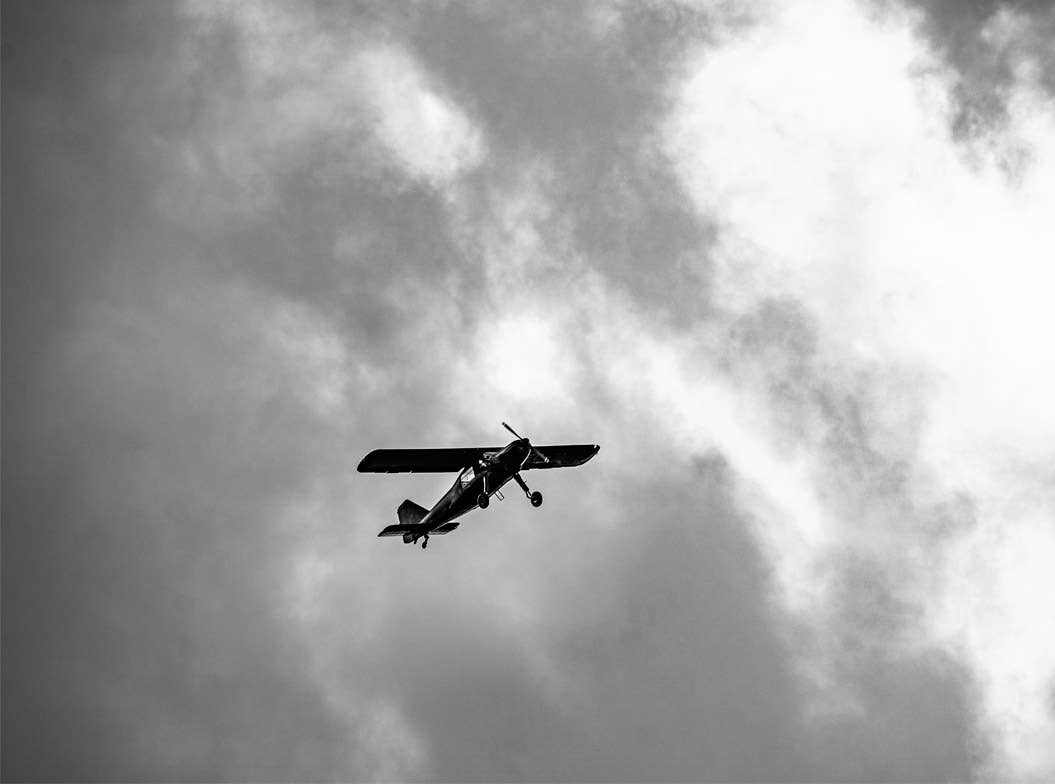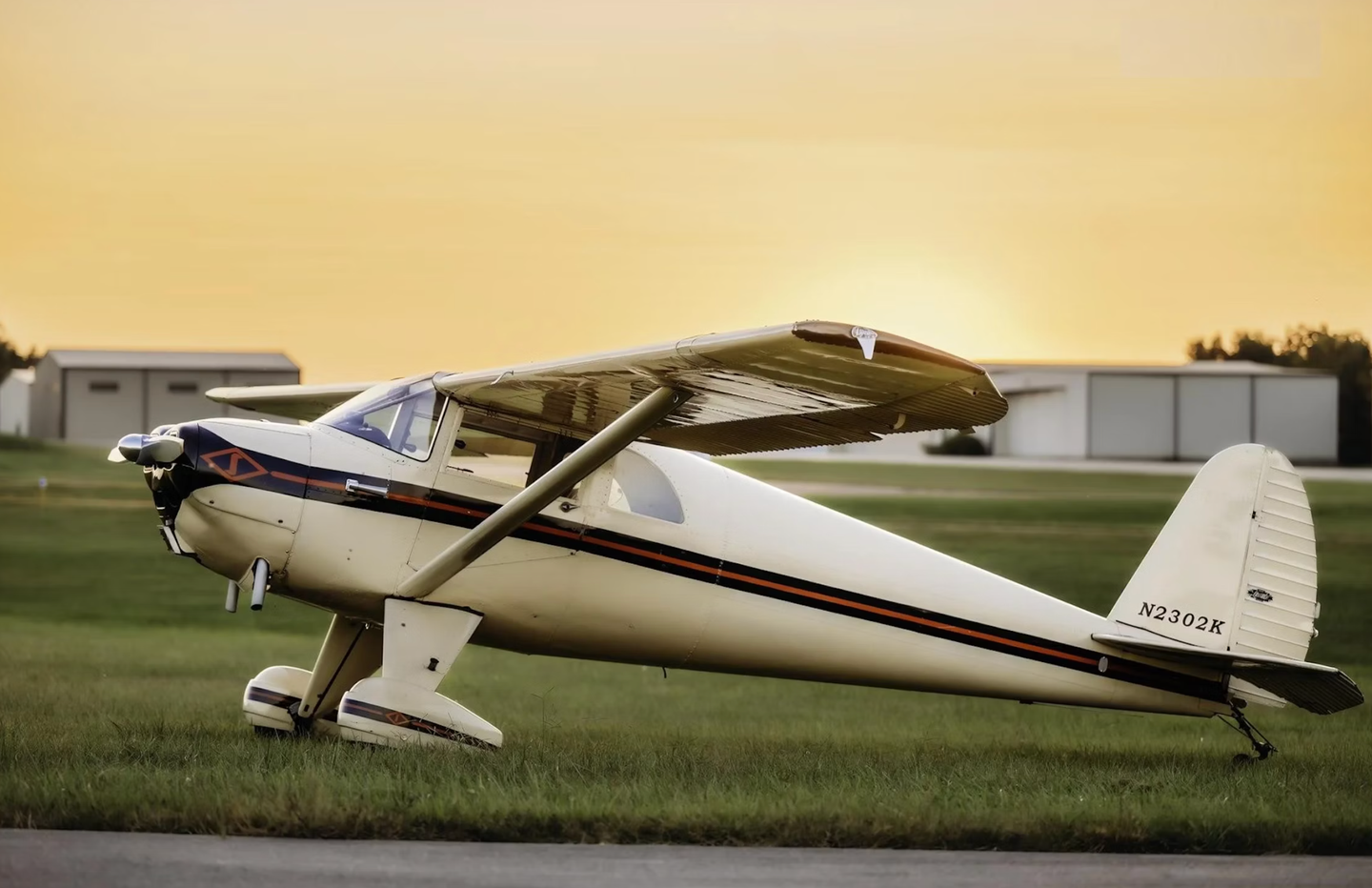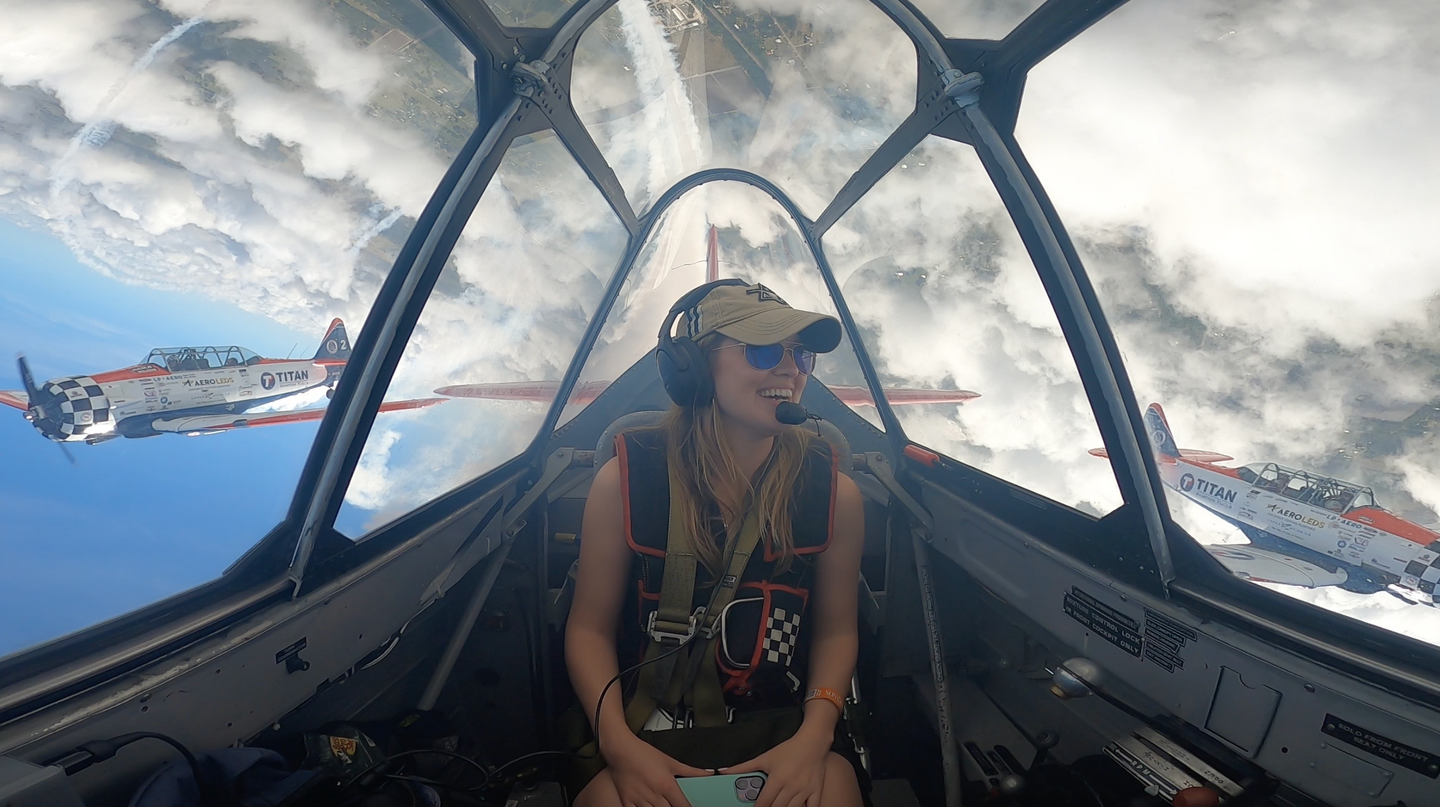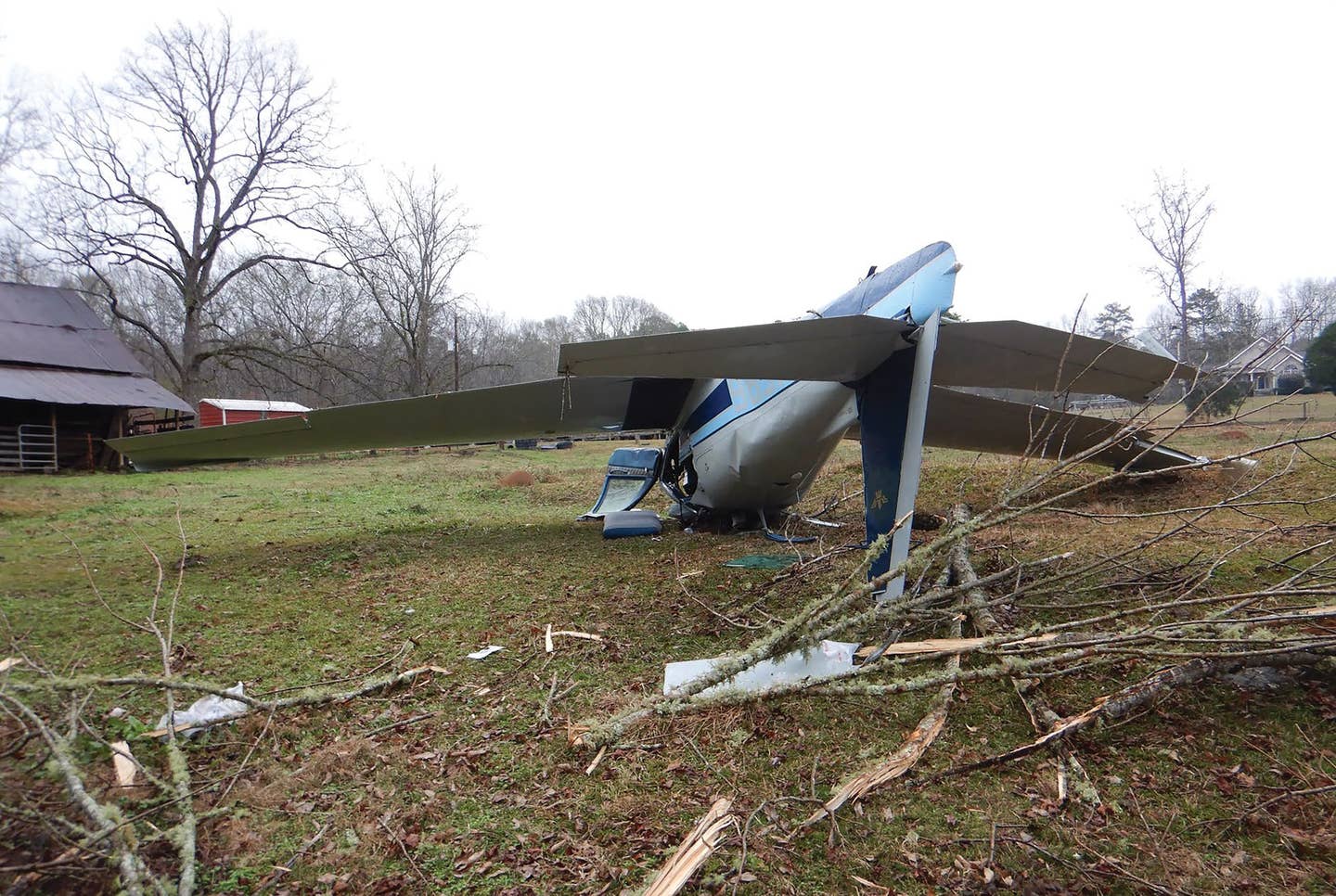
Maule MXT-7-180
La Porte, Texas/Injuries: 1 Serious
NTSB Report: CEN23FA164
The purpose of the flight was to conduct an aerial survey. Just after departing from Runway 5, the pilot announced on the airport’s common traffic advisory frequency that the engine was running rough and he was returning to the airport. Another pilot flying in the airport traffic pattern reported that the accident airplane appeared too high and fast to land on Runway 23. Shortly thereafter, the accident pilot transmitted that the engine was producing power again and that he was landing on Runway 5. The witness saw the accident airplane subsequently enter a left base for Runway 5 at low altitude and stated that the airplane appeared slow. The airplane overshot the runway, banked steeply, stalled, and entered a half-turn spin before impacting the ground. Two other pilots who were flying in the area reported similar observations of the accident sequence, and ADS-B track data was consistent with their statements. Examination of the airframe, engine, and fuel system did not reveal any preimpact anomalies that would have precluded normal operations. The weather conditions at the time of the accident were conducive to the development of serious carburetor icing, which was consistent with the pilot’s announcement of a rough-running engine. The circumstances of the accident are consistent with the pilot’s exceedance of the airplane’s critical angle of attack while maneuvering for an emergency landing following a partial loss of engine power, which resulted in an aerodynamic stall/spin and impact with terrain.
Probable cause(s): The pilot’s exceeding the airplane’s critical angle of attack while maneuvering for an emergency landing following a partial loss of engine power, which resulted in an aerodynamic stall/spin and impact with terrain. Contributing to the accident was the partial loss of engine power due to carburetor icing.
Cessna 140
Nyssa, Oregon/Injuries: 1 Minor
NTSB Report: WPR23LA168
The pilot, who had an estimated two hours of experience in the make and model, was attempting a takeoff when the left wing dropped. The aircraft went into the trees, coming to rest on its nose. Both wings and the fuselage sustained substantial damage.
Probable cause(s): The pilot’s failure to maintain adequate airspeed on takeoff that resulted in an aerodynamic stall and subsequent impact with trees.
Luscombe 8F
Palmer, Texas/Injuries: None
NTSB Report: CEN23LA17
The pilot, who had approximately 820 hours total time of which 573 hours were in the accident aircraft, reported that during the landing approach, he felt the left rudder cable break, resulting in a loss of rudder control. The pilot placed the airplane into a left-wing-low crab attitude and chose to land in a nearby field. During the landing, the left main landing gear collapsed and the left wing impacted terrain, which resulted in substantial damage. Postaccident examination revealed that the left rudder cable had separated at the pulley under the cabin floor. Examination of the cable revealed that it did not meet the airplane manufacturer’s specifications for the rudder control system, and that the cable displayed evidence of fatigue due to an excessive bending angle at the pulley. Additionally, the rudder assembly was missing an attach link on the left rudder cable return spring between the spring and firewall. The link is used to balance the tension forces on the rudder cables due to the design of the rudder system. Investigators determined the tension forces on the left cable were likely greater than design due to the missing part, which could have increased the risk of fatigue. The mechanic who conducted the most recent annual inspection did not remove the rudder control cables for inspection as required by an airworthiness directive. The mechanic stated that he did not remove the cables due to the time-consuming process and instead actuated the rudder pedals to move the cable and allow inspection around the pulleys and fairleads. It is likely that the degraded condition of the cable would have been discovered during the annual inspection if the mechanic had complied with the AD requirement to remove the cables. Additionally, investigators noted the mechanic should have identified that the rudder control cable itself did not meet manufacturer specifications, and that the rudder assembly was missing a rudder attach link. Additionally, the review of the airplane maintenance logbooks did not reveal the origin or installation date of the unapproved cable.
Probable cause(S): The installation of an unapproved rudder control cable, which resulted in a fatigue failure and subsequent loss of rudder control during cruise flight. Contributing to the accident was the mechanic’s inadequate inspection of the rudder control system.
SeaRey LSA
Detroit/Injuries: None
NTSB Report: CEN23LA214
The airplane was returning to the departure airport after a local training flight when the engine lost all power. According to investigators, the pilot and instructor were instructed to report a 2-mile left base for the runway when the pilot reported that the engine had lost power. The attempts to restore power were unsuccessful and the aircraft came down in a residential neighborhood between two garages.The pilot told investigators that he glanced at the fuel gauge during the approach, and it indicated one-quarter full. The postaccident examination of the aircraft revealed that only a trace amount of fuel was left in the fuel tank. No mechanical issues were found with the aircraft.
Probable cause(s): he pilot’s inadequate preflight planning and fuel exhaustion, resulting in a complete loss of engine power.
Cessna 180
Harrisburg, Pennsylvania/Injuries: 1 Fatal, 1 Serious
NTSB Report: ERA23FA252
The aircraft had a fuel capacity of 55 gallons usable. The pilot and passenger launched on a three-leg cross-country flight. The pilot estimated the fuel consumption to be 12 gph. The performance information in the POH revealed an additional 1.5 gallons was required for engine start, taxi and takeoff. The aircraft flew for approximately four hours, which included at least three takeoffs and landings. When the aircraft was about 1 mile from the final destination, the engine lost power. The pilot initiated a forced landing on a highway and collided with a utility vehicle on the road. Based on the information investigators determined the aircraft’s fuel burn per hour was 16.5 gallons, resulting in fuel exhaustion.
Probable cause(s): The pilot’s inadequate preflight fuel planning and improper in-flight decision making, which resulted in a total loss of engine power due to fuel exhaustion and a subsequent collision with terrain and objects.
Cessna 210
Tacoma, Washington/Injuries: None
NTSB Report: WPR23LA213
The accident happened during an instructional flight. According to the NTSB, while on the downwind leg of the traffic pattern, the flight instructor was unable to fully extend the landing gear. The landing gear appeared to be stuck in a transitional position. The instructor attempted to resolve the issue by repositioning the gear back to the up position, but the landing gear remained partially extended. The instructor spent 1.5 hours attempting to troubleshoot the issue, but was unsuccessful, so the decision was made to land with partial gear. The nose gear was down and locked, the mains were not, and during the touchdown the airplane veered off the runway, coming to rest in the grass. The postaccident inspection revealed the left main landing gear hydraulic actuator barrel was fractured adjacent to the end cap. A fracture at the retainer clip groove exhibited striations consistent with fatigue crack propagation, and other fractures through the barrel exhibited signatures of overstress failure. Investigators noted that Cessna had previously issued instructions for modification of some landing gear hydraulic actuators installed on the accident airplane make and model, and an FAA AD was subsequently issued to mandate the modifications. The maintenance records showed that the AD was performed on the accident airplane.
Probable cause(s): A fatigue failure of the left main landing gear hydraulic actuator, which resulted in a loss of hydraulic fluid that prevented the pilot from lowering the landing gear to the fully extended position and maintaining directional control after landing..
Cessna 172
Miami/Injuries: None
NTSB Report: ERA23LA259
The student pilot was conducting his first solo flight. The airplane was high on final so the student reduced engine power. The airplane bounced and then porpoised on the runway resulting in substantial damage to the fuselage.
Probable cause(s): The pilot’s improper landing flare, which resulted in substantial damage the airplane’s fuselage.
Piper PA-28-180
Lancaster, Tennessee/Injuries: 2 Minor
NTSB Report: ERA23LA26
According to the pilot, about 20 to 25 minutes into the flight the engine lost power and began to run rough. The pilot reported that the airframe was shaking and the airplane began losing altitude. Attempts to restore power were unsuccessful. The pilot set up for an off-airport landing, and notified air traffic control of his intentions to land in a field. At touchdown, the nose landing gear collapsed and the engine mount was substantially damaged. The postaccident examination of the engine revealed the No. 2 cylinder exhaust valve stem fractured due to fatigue that initiated on the outer surface. The resulting separation of the valve head resulted in the reported partial loss of engine power and rough running engine. Review of the engine maintenance records revealed it had been 39 years since the No. 2 exhaust valve was replaced, and 34 years since the valve guides were replaced. Although engine manufacturer service instructions are not mandatory for Part 91 operators, the engine manufacturer recommended engine overhaul within 12 years of either being put in service or last overhaul. The most recent engine overhaul had been 45 years earlier.
Probable cause(s): The fatigue failure of an exhaust valve, resulting in a partial loss of engine power.

Subscribe to Our Newsletter
Get the latest Plane & Pilot Magazine stories delivered directly to your inbox






